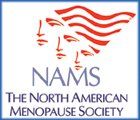NAMS Notes: Highlights of a new position statement on calcium
To guide health-care providers about the role of calcium in peri-and postmenopausal women, The North American Menopause Society recently developed an evidence-based statement.
Highlights of a new position statement on calciumfrom The North American Menopause Society

To guide health-care providers about the role of calcium in peri- and postmenopausal women, The North American Menopause Society recently developed an evidence-based position statement. The full text of that document-an update to a similar statement published in 2001-can be viewed on the NAMS Web site at http:// http://www.menopause.org/aboutmeno/PScalcium.pdf. It offers 2 CME hours until 11/15/07.
Calcium intake
Adequate calcium intake (in the pres-ence of adequate vitamin D status) has been shown to reduce bone loss in peri-and postmenopausal women and reduce fractures in postmenopausal women older than age 60 with low calcium intakes. Calcium strongly enhances the bone-protective effects of estrogen therapy/estrogen-progestin therapy in postmenopausal women. Adequate calcium is considered a key component of any treatment regimen for patients with established osteoporosis.
Menopausal status and calcium
A woman's calcium requirement increases at menopause (or whenever estrogen is lost). This is because calcium absorption efficiency and renal conservation are both estrogen dependent, and both deteriorate in the estrogen-deprived state.
Target intake and sources
The target calcium intake for most postmenopausal women is 1,200 mg/day. Adequate vitamin D status, defined as serum 25 (OH)D of 30 ng/mL or more, is required to achieve the nutritional benefits of calcium. This level is usually achieved with a daily oral intake of at least 400 to 600 IU.
Foods should be the primary source of calcium intake. Dairy products are among the best sources of the mineral based on their calcium content, absorption, content of other essential nutrients, and low cost relative to total nutritional value. Approximately 3 cups of dairy products daily provide the 1,200-mg target.
Supplements and fortified foods are an alternative source for women not able to consume enough dietary calcium to reach the recommended daily intake. Calcium supplements are best taken with meals and in divided doses (typically 500 mg or less at one time) to maximize absorption. Because calcium bioavailability varies from product to product, name-brand supplements that have been tested to demonstrate consistent bioavailability are recommended. There are no reported cases of calcium intoxication from food sources, and cases associated with supplements are rare.
Calcium benefits
Calcium, like most nutrients, has beneficial effects in many systems. In addition to protection of bone mass and reduction of excessive bone remodeling, calcium is associated with small reductions in the risk of colorectal cancer, hypertension, renal calculi, and obesity. Based on the generally consistent animal and human data, a case can be made that calcium intake greater than or equal to the current recommended calcium intake provides some chemoprotective properties against colorectal cancer. Trials have demonstrated that a calcium intake of at least 1,200 mg/day is associated with a beneficial effect on systolic blood pressure. However, further research is needed.
Calcium intake of up to 1,500 mg/day has been found to reduce the risk of developing renal calculi, but one study has found a 17% increased risk at 2,150 mg/day. For women at high risk of developing renal calculi, foods may be the best sources of calcium. If calcium supplementation is needed, each dose must not exceed the age-appropriate allowance and should be taken with a large glass of water, as avoiding dehydration is an important practice for these patients.
Although limited data suggest a statistically strong inverse correlation between the risk of obesity and dietary calcium intake, available studies indicate that calcium intake explains only a small portion of the variability in body weight in postmenopausal women. Nevertheless, ensuring an adequate calcium intake for skeletal purposes may confer small weight-control benefits as well.
